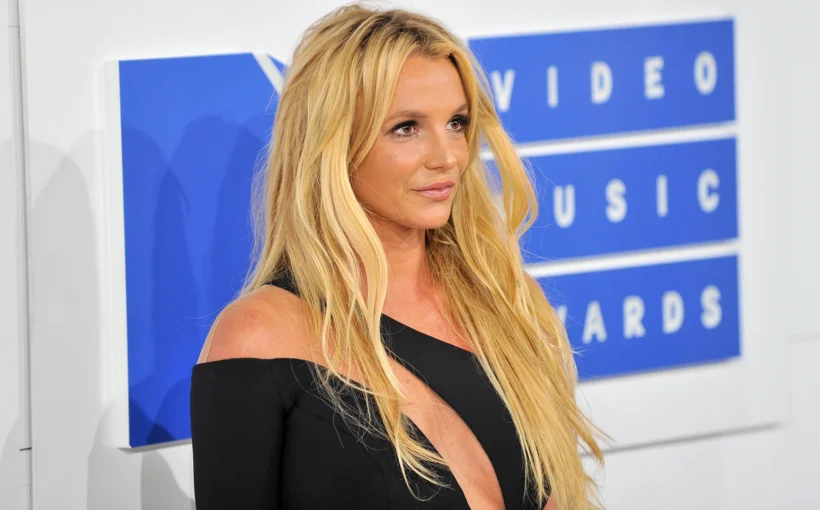Britney Spears’ new memoir, The Woman in Me, illustrates once again the potential lifelong damage that can be caused by being a child star. Like many before her, including Judy Garland and Michael Jackson, Spears was ushered into the dangerous terrain of childhood fame by the adults who were supposed to be protecting her, and was utterly unprepared to deal with the fallout.
Spears’ father’s conservatorship, controlling every aspect of her personal and professional life, was finally rescinded in 2021. She is now able to share the details of her extraordinary years in the limelight and beyond.
From a sociological perspective, childhood is considered socially constructed. This means that there are specific ways of raising children which are socially and culturally defined. We discard these conventions surrounding the early years of life at our peril.
The boundaries and rules around what is and is not acceptable during childhood, and the normal activities and institutions that shape the experience of being a child have developed over the centuries for a reason – to try and keep children safe from the harsh realities of the adult world.
Being sexualised and valued for your appearance, being paid to work, having to deal with criticism and unwanted attention from strangers – these are all difficult aspects of growing up. Children and teens need careful support and guidance if they are to navigate safely into their adult lives and identities.
The experience of childhood fame throws aside this social safety net for children in every possible way, and the consequences can be disastrous.
The price of child fame
From the earliest child stars of Hollywood’s golden age, through the television sitcoms and shows of the mid-20th century, the rise of the pop and film industries in the following decades and the burst in popularity of reality TV and talent shows of the early 21st century, children have always featured. Many have paid a heavy price for their often short period of fame.
Sad stories of drug and alcohol addiction, family disputes, criminal activity and toxic relationships are frequently reported by the media. These reinforce the stereotypical “child star gone bad” and “too much too young” narratives that the wider public has come to expect.
For example, stories abound of Macaulay Culkin “divorcing” his controlling parents and his difficulties transitioning into adult life, feeling trapped in the image of boyhood innocence of his most famous character, Kevin in the Home Alone movies.
In her autobiography actor Drew Barrymore has written about her casual acceptance at Hollywood parties and consumption of alcohol at a very young age, following her role in E.T. (1982) aged five.
There is also the tragic life and death of Gary Coleman, cute kid star of the American sitcom Diff’rent Strokes (1978-1986).
Coleman, who died at 42 following a history of substance abuse and depression, reported being deeply humiliated by people asking: “Didn’t you used to be …?” when he was working as a security guard at a supermarket as an adult.
Other possibilities
It’s important to note, however, that a difficult trajectory is not the experience of all child stars and former child stars. The actors from the Harry Potter films, for example, seem largely to have transitioned well into adult lives and careers – some in the spotlight, others not.
And the new generation of famous children and teens such as Millie Bobby Brown, star of the Netflix show Stranger Things (2016-present), seem more prepared for fame than their predecessors, in control of their images and identities via their own social media platforms and potentially protected to some extent from extreme sexualisation by the MeToo movement.
Even so, Brown commented on her 16th birthday that: “There are moments I get frustrated from the inaccuracy, inappropriate comments, sexualization, and unnecessary insults.”
For Spears though, these were more than moments. She details in her memoir how the constant public scrutiny of her body and physical appearance, being valued for her sexuality and treated as a commodity have characterised her entire life.
It is no wonder she shaved her head in 2007, a move interpreted by the media as her having “gone mad”, but in fact a powerful indication of her anger at being perceived as nothing more than a dancing sex-doll. As she writes in her memoir:
I knew a lot of guys thought long hair was hot. Shaving my head was a way of saying to the world: fuck you. You want me to be pretty for you? Fuck you. You want me to be good for you? Fuck you. You want me to be your dream girl? Fuck you.
The sociologist Erving Goffman wrote about the stigma of having a “spoiled identity” whereby people carry with them the public shame of transgression or physical difference.
Being a former child star can be stigmatising for many reasons, including being constantly compared to an ideal younger version of yourself and not having had a “normal” childhood or conventional family relationships.
In this memoir, Britney attempts to face down that stigma and reclaim her identity and person-hood as an adult. In doing so, she demonstrates that it can be possible to leave the dangerous terrain of early fame behind – but the journey is a tough one.
![]()
Jane O’Connor does not work for, consult, own shares in or receive funding from any company or organization that would benefit from this article, and has disclosed no relevant affiliations beyond their academic appointment.



